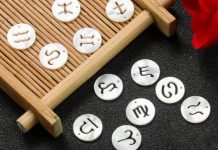Acupressure DIY at Home
Frozen Shoulder also known as adhesive capsulitis, describes a condition characterized by stiffness, pain and restricted range of motion that generally worsens at night and with cold weather. This is a painful condition and those affected by this experience constant pain that can be exacerbated by any type of movement. The constant pain and restrictive range of motion is debilitative and not only affect daily tasks but also disrupt sleep. Scar tissue forms around the shoulder joint, or glenohumeral joint and becomes inflamed and usually worsens until it resolves itself, about 1-2 years from the point of onset.
Frozen shoulder can develop from injury, trauma, or immobilization and inactivity of the shoulder due to injury or surgery. This condition develops more commonly in people aged 40 and older, and is seen more commonly in women.
There are diseases that may be risk factors for frozen shoulder, if you suspect that you have developed this condition, make an appointment to see your primary care physician for proper diagnosis and treatment as soon as possible.
Disclaimer: This information is intended as a patient education resource only and should not be used for diagnosing or treating a health problem as it is not a substitute for expert professional care. If you have or suspect you may have a health problem, please consult your health care provider.
Acupressure DIY:
These Acupressure points should be stimulated with moderate pressure and should be stimulated frequently throughout the day! Stimulate each point with your thumb and/or index finger for at least a minute before moving on to the next point!
 Try Massaging the Acupressure Points Below to Help Alleviate Ringing in the Ears.
Try Massaging the Acupressure Points Below to Help Alleviate Ringing in the Ears.
- SI 3 (Hou Xi) : This point is located when a loose fist is made, at the ulnar end of the distal palmar crease, proximal to the 5th metacarpal phalangeal joint at the junction of the red and white skin.
- LU 7 (Lie Que) : This point is located 1.5 cun above the wrist crease, superior to the styloid process of the radium.
- GB 34 (Yang Ling Quan) : This point is located on the lateral leg, anterior and inferior to the head of the fibula.
- SI 9 (Jian Zhen) : This point is located 1 cun above the posterior end of the axillary fold, posterior and inferior to the shoulder joint, located with the arm adducted.
- SI 10 (Nao Shu) : This point is located with the arm abducted, directly above SI 9, in a depresison inferior to the scapular spine.
(See pics below)
 For more information, please email info@fcim.edu. https://www.fcim.edu
For more information, please email info@fcim.edu. https://www.fcim.edu









